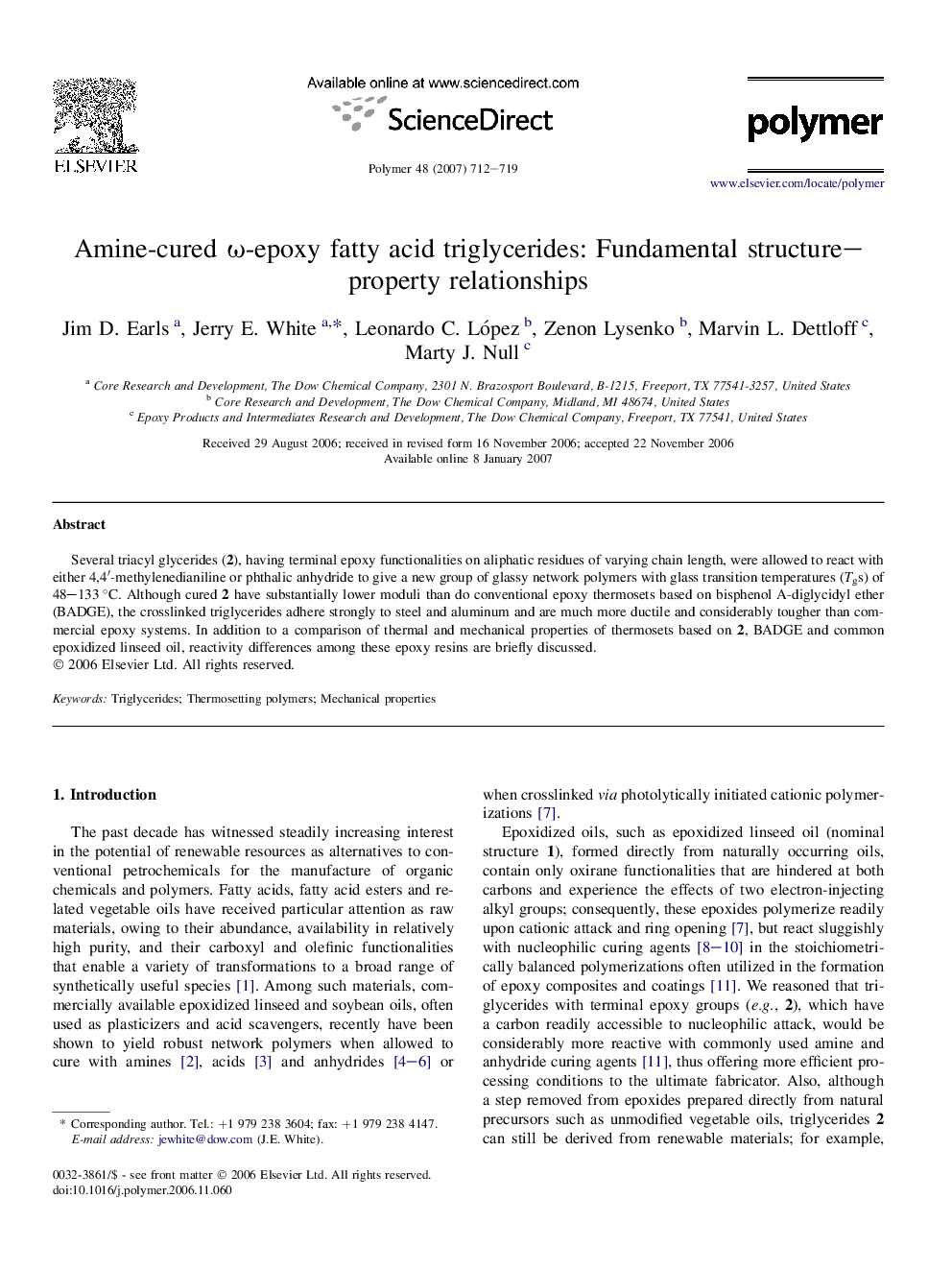| Article ID | Journal | Published Year | Pages | File Type |
|---|---|---|---|---|
| 5186284 | Polymer | 2007 | 8 Pages |
Abstract
Several triacyl glycerides (2), having terminal epoxy functionalities on aliphatic residues of varying chain length, were allowed to react with either 4,4â²-methylenedianiline or phthalic anhydride to give a new group of glassy network polymers with glass transition temperatures (Tgs) of 48-133 °C. Although cured 2 have substantially lower moduli than do conventional epoxy thermosets based on bisphenol A-diglycidyl ether (BADGE), the crosslinked triglycerides adhere strongly to steel and aluminum and are much more ductile and considerably tougher than commercial epoxy systems. In addition to a comparison of thermal and mechanical properties of thermosets based on 2, BADGE and common epoxidized linseed oil, reactivity differences among these epoxy resins are briefly discussed.
Related Topics
Physical Sciences and Engineering
Chemistry
Organic Chemistry
Authors
Jim D. Earls, Jerry E. White, Leonardo C. López, Zenon Lysenko, Marvin L. Dettloff, Marty J. Null,
